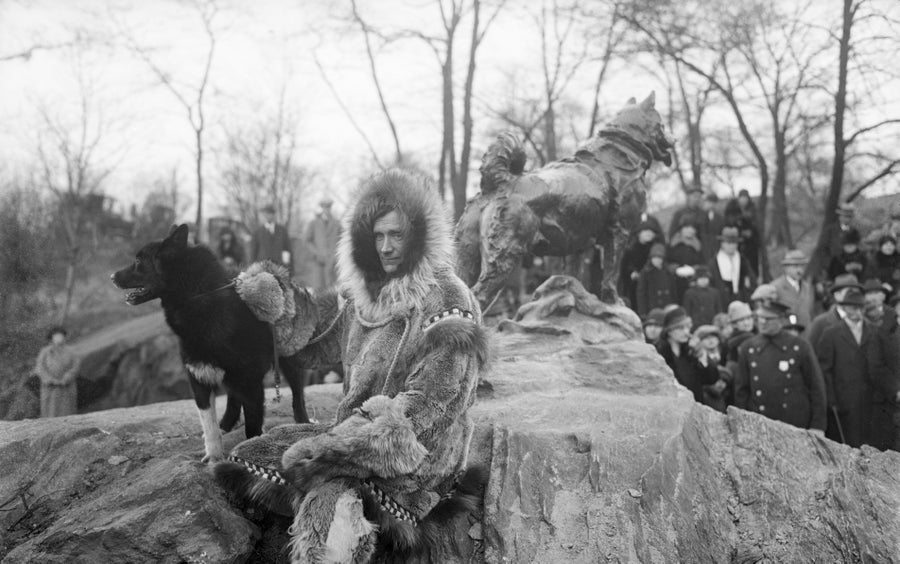Any pet parent has seen some odd behaviors from their furry companion—from sniffing butts and tilting heads to delivering unwanted, lifeless “gifts.” Every year scientists inch closer to explaining these mannerisms by finding evolutionary or genetic underpinnings to our favorite animals’ quirks. Here’s what the research told us about cats and dogs in 2023.
Cats Are Perfect (No, a Cat Didn’t Write This)
Whether they’re house cats, lions or anything in between, cats have nailed their evolutionary niche—and that makes them “perfect,” according to evolutionary biologist Anjali Goswami. The cat family exhibits very little variation between species—for example, a lion and a tiger have nearly identically shaped skulls, and different-sized members of the cat family are bigger or smaller in a proportionally consistent way. That lack of diversity means they’ve reached their evolutionary “peak” and don’t really need any adaptive variation. “They don’t change anything else because they’re just right otherwise,” Goswami says. “They’re not jacks-of-all-trades; they’re masters of one.”
On supporting science journalism
If you're enjoying this article, consider supporting our award-winning journalism by subscribing. By purchasing a subscription you are helping to ensure the future of impactful stories about the discoveries and ideas shaping our world today.
Teaching an Old Dog New Words
Dogs are generally known for their smarts, but if you compare, say, bulldogs and border collies, one breed can certainly seem dopier than the other. Beyond learning to roll over or play dead, our canine pals’ “genius” can be measured through their grasp of language. Dogs have been human companions for thousands of years and seem to be able to learn many of our language cues. This year new research found that a few gifted pooches can identify more than 100 different objects (mostly toys) by name—though this was far above the norm. Among the contenders in the “Genius Dog Challenge,” the majority knew 20 or more words when first tested by researchers—but many dogs can’t manage to learn any words at all.
Fetch, Kitty Kitty
Most of us know that dogs love nothing more than retrieving balls, sticks and Frisbees for their owners—but now science says this is a feline phenomenon, too. Cat owners have reported fetching behavior in their pets for years; some domestic cats bring an item that their owner has dropped and wait for it to be thrown. This behavior often begins when the pets are kittens. Cats do seem to get bored with this game more easily than their canine counterparts, though. And it’s not entirely clear why cats engage in this behavior—a meow-stery for science to continue to explore.
Your Cat Can Hear You—It Just Chooses Not To
Cats have a reputation for not listening to people, but new research shows that cats actually do know when their owner is trying to talk to them. Scientists found that cats reacted to their owner speaking to them in cat-directed speech—a high-pitched voice similar to baby talk—but ignored their owner when this person was speaking to a stranger. So Mittens hears you call; sometimes she just chooses not to listen.

Musher Gunnar Kasson and his dog Balto are seen in close-up at the unveiling of a statue to honor Balto. Kasson led a dog team that saved many lives in Nome, Alaska, when he arrived there with diphtheria antitoxin. Balto was the leader of the dogs. Credit: Bettmann/Getty Images
Dogs Used to Be Fitter
Modern dogs have much less genetic diversity than their ancestors. Thanks to selective breeding—almost always for cosmetic traits—dogs of the same breed look strikingly similar generation after generation. Researchers this year explored how dog genetics have changed over time by tapping into the genome of Balto, the famous sled dog that braved a treacherous, 500-mile-plus journey to deliver life-saving medicine across Alaska in 1925. They found that the Siberian husky had much greater genetic diversity than modern dogs, and this may have made him healthier and better suited to survival in the Arctic.
Cat’s Labyrinth
Dogs are famous for their super-sensitive nose (and for trying to sniff everything on their walks, to the consternation of many a dog owner), but it turns out that cats’ sense of smell is nothing to sneeze at. New research shows a cat’s nasal passage is a complex network of turbinates—channels that are lined with smell sensors and arranged in tight coils. Like a gas chromatograph—a sensitive laboratory machine that separates chemicals based on their solubility—these channels efficiently separate smells. Purr-haps that’s just more evidence of cats’ purr-fection? (Okay, we’ll stop now.)
